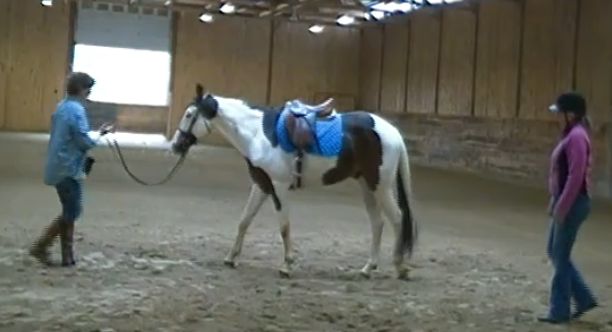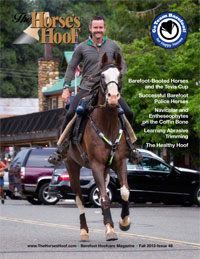 I’d posted a link to the 2nd part of my CHA conference presentation on another forum and was accused of not posting the entire thing thus being deceptive and lying. What happened was that I was negligent to check to see what actually posted on youtube … thus, didn’t realize that only a small portion of the video loaded up. Grrrrrrrrr. Yes, I should have checked. I made a mistake and didn’t check but assumed that it had all loaded without issue. Won’t do THAT again! *LOL*
I’d posted a link to the 2nd part of my CHA conference presentation on another forum and was accused of not posting the entire thing thus being deceptive and lying. What happened was that I was negligent to check to see what actually posted on youtube … thus, didn’t realize that only a small portion of the video loaded up. Grrrrrrrrr. Yes, I should have checked. I made a mistake and didn’t check but assumed that it had all loaded without issue. Won’t do THAT again! *LOL*
At any rate .. here are the full portions of the clicker training with “Earl”, a 5 year old who had never stood quietly at the mounting block. The original rider had to cancel so a volunteer person graciously offered to be his stand in. I had talked too long in the lecture part of the presentation and thus we only had about 20 mins to work with this horse. He did an EXCELLENT job — was calm and only offered a belligerent attitude once in the beginning when he bit me on the elbow. From our short work with Hind End Disengagement to establish leadership he very quickly fell into the ‘follower’ role nicely and was a delight to work with. He was engaged, never offered to drag me around (as was told to me — he *had* to wear a chain on his nose for ‘control’ or he’d barge into and drag his handlers around …) He connected with me in just a moment’s time as is seen in the video and from then on a willing student. The plan was to have the original rider mount the horse but because the volunteer was a bit nervous and we had run out of time we stopped when Earl was very pleasantly standing quietly, even without being held at a couple of points, at the mounting block.
I know that the next day he was worked with again (or maybe it was a couple of days later) and he was not so cooperative with the handler or his rider. All I have to say to that is intent means far more to the horse than body language or a cooing voice. They sense what’s truly in the heart and when they get nervous they are not going to simply stand around and wait to be eaten up. Horses HAVE to move their feet when feeling threatened. One that continually bolts away or resists pressure or braces and pulls back is not trusting of the handler. It’s as simple as that. It’s equine behavior and nature. A horse will resist with exactly the same amount of pressure that is being applied. That pressure may be physical as with a lead rope and shank, it may be physical as with a whip or it may be simply the attitude and energy of the handler — they are all forms of pressure. The way a person approaches the horse, the way a person moves, the energy that is exuded from within the handler … suffice to say that PENZANCE’s ‘motto’, “It’s all about what’s in the heart and how you use it.” never stood more true than with horses.
OK, enough .. here’re the videos: https://vimeo.com/46154210 https://vimeo.com/46154564 https://vimeo.com/46227341
Take note of the horse’s calmness, the loose lead, the role he took of ‘follower’ … Earl is a nice, nice horse. He’s young and scared and lookin’ out for himself cause of the lack of trust in humans to look out for him. I know he has issues – trusting humans being his biggest. Horses gotta be able to trust the human — if not, all is lost. A horse feeling threatened will not learn a lesson well. They may learn to avoid punishment by doing what they learn avoids that punishment (whip or kick or shank or other punishing action) but that’s not truly a thinking behavior but, rather, a reactionary behavior – an avoidance behavior. This means that the horse will continually need the ‘punishment’ to respond favorably to the certain demand. Studies have shown that horses respond and retain lessons far more intently and strongly when positive reinforcement is used. But after all … if a child is crying because he’s afraid there’s a monster in the room and is then spanked for his crying, what is that child learning? Not to be afraid of the monster he ‘knows’ is lurking? No, he’s learning to be afraid of the punishment so he stops crying in order to not be punished. Still afraid of the monster. And now adds another mistrust to the equation – that of the punishing person. 2 fears now instead of 1. Resent grows as the child grows older as the betrayal of trust has not been resolved.
Horse not willing to stand at mounting block … unwillingness based on fear. Rewarding the horse for standing quietly and the horse will forget his fear and learn to anticipate the reward (whether or not its pressure or food related.) — the pleasure he feels when he stands quietly at the mounting block. He retains the lessons well. Punishing the horse for not standing quietly and all the horse remembers is that he’s going to be punished whenever he is near the mounting block. (think of the horse that doesn’t stand cause everytime someone gets on he gets a boot toed in his side — not only has the horse been taught to move forward with a ‘kick’ but now he’s getting booted in his side when he’s supposed to stand still?Then he gets shanked on the nose or whipped on his butt for moving etc. etc. Confusing? Yep. And confusion for a horse means feelings of threats, fear … the natural instinct to flee sets in and now he HAS to move his feet and then he’s punished for moving. Good grief … makes all the sense in the world, right? No. But are you getting the picture?) Horses that are repeatedly punished will eventually either give up or he’ll start fighting. One or the other. Mostly what I’ve run across are those who have been punished to point of a wreck. And that’s a danger, obviously — both for the horse and the human involved.
And so the picture is painted for Earl. A 5 year old ‘baby’ who has been ‘punished’ repeatedly for not standing at the mounting block and has a phobia about it — with all the right in the world to have it.
Positive reinforcement coupled with negative reinforcement (HED and other pressure/release) started to change Earl’s mind and he decided it wasn’t so bad a place to stand at the mounting block while someone put weight on his back. Unfortunately, I don’t think it did stick the next time but not cause of Earl .. and not cause the presentation ‘failed’ but because the punishment resumed.
A little encouragement and reward goes a long way …










